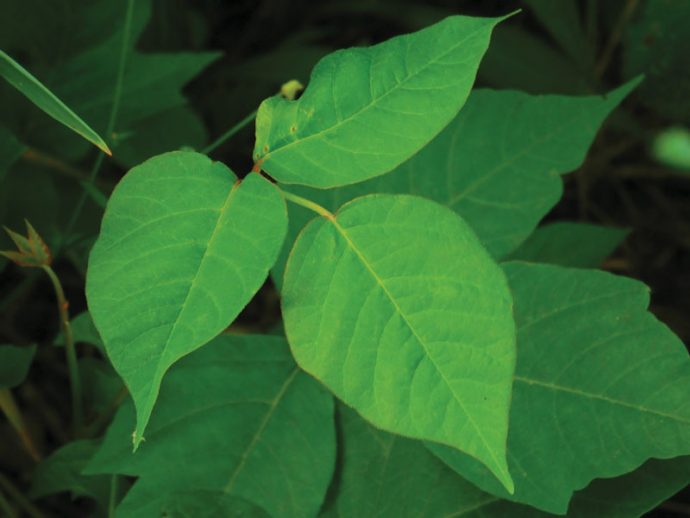If butterflies land there, don’t put your hand there:” The old children’s rhyme is my caution against the dangers of touching poison ivy and related outdoor plants like poison oak and poison sumac, whose oily substance can cause serious — and, sometimes, severe — skin reactions.
In fact, allergic contact dermatitis, which promotes intense itching, burning sensation, painful skin rash and even skin infection if a person exacerbates the affected area by repeated scratching, is most commonly the result of contact with poison ivy.
Butterflies land on poison ivy, because they are not sensitive to the plant’s resin but are protected there from predators that avoid the plant.
Although temporary, contact dermatitis can distress patients for several weeks or more. The recommended application of calamine lotion, corticosteroid creams or cool, wet compresses to the affected skin area may lessen symptoms but usually do not shorten the course of the disease.
More than 10 million Americans annually are infected by urushiol, the toxic oil of poisonous plants, and that number is expected to grow, according to scientists, who say the increasing carbon dioxide in the air due to climate change is fostering the growth of poison ivy and related flora.
Urushiol is readily spread. You don’t have to touch plants directly to become infected. Simply walking through an area of poison ivy and then later rubbing your clothes or shoes can cause an allergic skin reaction. Even the smoke from the burning of plant waste that includes poison ivy carries urushiol particles that may prompt facial swelling and skin reaction in exposed areas of the body.
Here are some tips for those unlucky enough to encounter poison ivy or any of its relatives:
• Rinse off the exposed skin immediately in warm — not hot — soapy water and wash under your nails. Even if you are unable to remove enough of the plant oil to prevent a reaction, you can limit its spread to other parts of the body.
• Wear gloves and wash off clothing, garden tools and anything else in contact with the plant.
• If contact dermatitis develops, do not scratch the affected area. Scratching only worsens the condition and leads to potential infection. Cool, wet compresses placed on the skin help reduce the itch.
• Take lukewarm baths of short duration and apply calamine lotion or hydrocortisone cream to the affected skin.
• Go to a hospital emergency room if you have trouble breathing, experience swelling on any part of the face and genitals or develop a generalized skin rash.
The best medicine, of course, is prevention. If gardening or walking through brush or forested areas, wear long-sleeved shirts and pants, socks and shoes that completely cover your feet.
And, to close with another helpful rhyme, “If it has leaves of three, let it be.”
Robert Levine, DO, FAOCD, is with Advanced Dermatology PC and the Center for Laser and Cosmetic Surgery (New York and New Jersey), one of the leading dermatology centers in the nation, offering highly experienced physicians in the fields of cosmetic and laser dermatology as well as plastic surgery and state-of-the-art medical technologies. For more, visit advanceddermatologypc.com.

